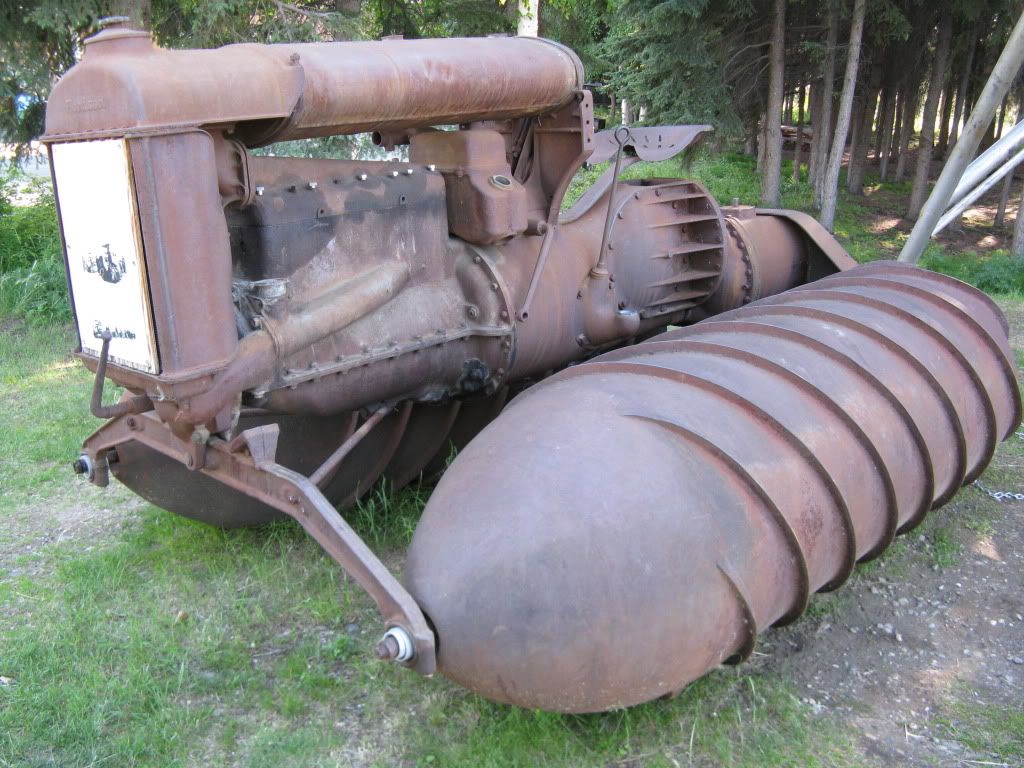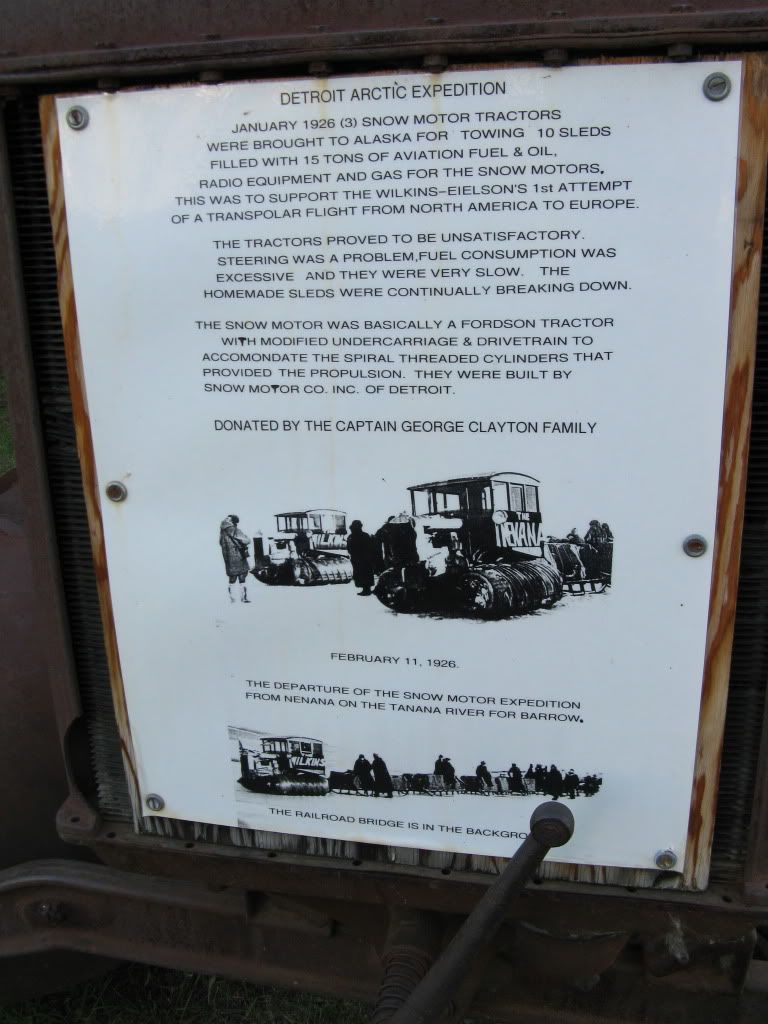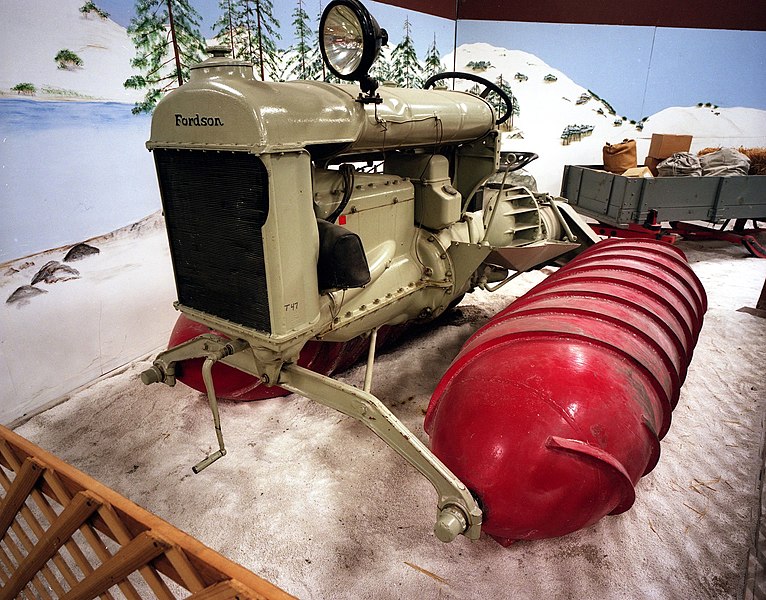Does anyone have any more information on this early screw-worm snowmobile?
Results 1 to 5 of 5
-
May-14-10, 11:00 PM #1
 DetroitYES Member
DetroitYES Member
- Join Date
- Mar 2009
- Posts
- 8,166
 Fordson Snow Machine - 1929 Concept
Fordson Snow Machine - 1929 Concept
Last edited by Jimaz; July-13-10 at 06:02 PM.
-
May-15-10, 03:54 PM #2LDoolan Guest

I may have some info in my files.... It may take me a bit to dig thru it all however......
-
May-15-10, 04:17 PM #3
 DetroitYES Member
DetroitYES Member
- Join Date
- Oct 2009
- Posts
- 1,557

Must be great fun to see one in action in winter. You would be king of the block!
This one is at the Transport museum in Fairbanks, Alaska.


Wiki:
http://en.wikipedia.org/wiki/Screw-propelled_vehicle

In California, would you believe!
There are many more around but I don't know if there are examples in working order.Last edited by Whitehouse; May-15-10 at 04:32 PM.
-
May-15-10, 04:42 PM #4
 DetroitYES Member
DetroitYES Member
- Join Date
- Mar 2009
- Posts
- 8,166
-
May-15-10, 05:50 PM #5
 DetroitYES Member
DetroitYES Member
- Join Date
- Oct 2009
- Posts
- 1,557

More examples:
http://image59.webshots.com/459/2/84...1FlNhvv_ph.jpg
http://image14.webshots.com/14/9/55/...1ZJpnts_ph.jpg
http://www.aksturgeon.com/wp-content...owmobile_U.jpg
http://cruisin2.files.wordpress.com/2010/01/24cts7s.jpg
This in effect made the tractor a snowmobile
with the addition of a pair of cylinders and was dubbed the
Fordson Snow Devil. Steering was effected by having each cylinder
receive power from a separate clutch which, depending on the
position of the steering gear, engages and disengages; this
results a vehicle that is relatively maneuverable. For a good
picture of the rear of the tractor with its gears and chains go
here.
The first of these vehicles actually built was designed
by James and Ira Peavey of Maine in 1907. The Peavey family is
famous for its contributions to the lumber industry ever since
Joseph Peavey invented the tool known to this day as a Peavy.
The Peavey Manufacturing Co. is still around today.
The promotional film was made to show the capabilities of the
conversion on a Fordson tractor and Chevrolet car. As the film
shows this rig does well in snow, on ice, and even in a grass
field. It could also pull 20 tons of logs on trailers through
the snow. Oregon Stage ordered some for winter months; The
Royal Canadian Mounted Police, the Hudson Bay Co., the Post
Office, and companies overseas also ordered them. If you’re
ever in Woodland, California, check out a Snow-motor at the
Heidrick Ag History Center.
This design came close to having a role in World War II
in Operation Plough. It was all set to go as a vehicle to
get small groups of soldiers from Norway into Germany on combat
missions until Louis Mountbatten became Chief of Combined
Operation’s and was soon scrapped in favor of a conventional
tracked vehicle. The German army tested a schraubenantrieb
scneemaschine [[screw-propelled snow machine) in 1944 but it
was also scrapped because of slow speed.
Then during the Vietnam war the American Waterways Experiment
Station [[WES) tested a “marsh screw amphibian” that was designed
by Chrysler Corporation. It had counter rotating screws for
propulsion which worked well in water and marsh but failed
terribly on soil surfaces, especially sand. The average maximum
speed during tests was 1.6 mph. In spite of the disappointing
test results, Chrysler built a larger vehicle called the
Riverine Utility Craft [[RUC) for the Navy in 1969. This vehicle
had two aluminum rotors 39 inches in diameter and was capable of
15.7 knots on water and 25 knots on marsh. On solid ground
it was only capable of 3.6 knots and had trouble crossing
dikes as it would get stuck.
The Russians even got into the snow-motors when they built
the ZIL-2906 screw-propelled vehicle to recover cosmonauts
who landed in previously inaccessable areas.
The Amphirol came into being in the 1960s when Joseph Jean
de Bakker built his version of the screw-propelled vehicle
in the Netherlands. He used flanged cylinders and two
variomatic transmission and could run sideways at 30 kph on
dry land. The cylinders also moved in and out to make a
tighter turning radius. These vehicles are used for ground
surveying, grooving newly drained areas, and carry soil-
drilling teams.
Last edited by Whitehouse; May-15-10 at 06:14 PM.
Welcome to DetroitYES! Kindly Consider Turning Off Your Ad BlockingX
DetroitYES! is a free service that relies on revenue from ad display [regrettably] and donations. We notice that you are using an ad-blocking program that prevents us from earning revenue during your visit.
Ads are REMOVED for Members who donate to DetroitYES! [You must be logged in for ads to disappear]
Ads are REMOVED for Members who donate to DetroitYES! [You must be logged in for ads to disappear]
DONATE HERE »
And have Ads removed.
And have Ads removed.





 Reply With Quote
Reply With Quote



Bookmarks